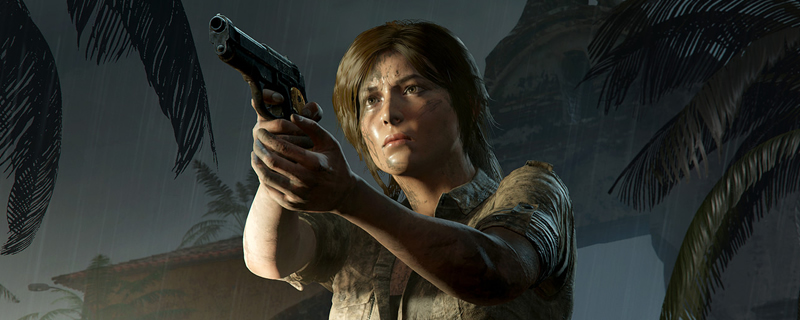Shadow of the Tomb Raider PC Performance Review
Conclusion
Shadow of the Tomb Raider is one of PC gaming’s latest graphical showcases, with Eidos Montreal showcasing how far PC visuals can be pushed beyond the capabilities of even today’s high-end PS4 Pro and Xbox One X consoles.Â
With Shadow of the Tomb Raider there are no shortage of things to talk about, especially when it comes to the game’s future potential, with planned support for both Nvidia’s RTX Ray Tracing hardware as well as support for features such as DLSS, which promises a significant performance boost to users to Nvidia’s RTX hardware. These features are not available to PC gamers right now, and as such are not covered in this performance overview.Â
In most cases, Shadow of the Tomb Raider’s PS4 Pro/Xbox One X versions are similar to the PC version’s Medium settings, with PC offering gamers higher quality shadows, extended draw distances and higher resolution textures than its console counterparts, alongside higher quality graphical features like Screen Space Contact Shadows, HBAO+ and tessellation.Â
For starters, we will discuss how to get the best performance out of Shadow of the Tomb Raider, something which is undoubtedly achieved when using the DirectX 12 API on all of the hardware that we have tested. DirectX 11 is available to use, but the API should only be used by users of older Windows operating systems, as the CPU-level advantages of DirectX 12 are enough to deliver significantly more performance on Microsoft’s latest graphical API.Â
While Shadow of the Tomb Raider does feature an integrated benchmarking utility, it is far from being an accurate stress test when conducting CPU testing, as densely populated areas like Kuwaq Yaku and the “Hidden City” can suffer from colossal performance dips when using CPUs with four threads or less. Most areas of the game outside of these hub locations can offer excellent performance on a strong quad-core system, but hub areas will be a challenge for those who do not have a CPU a high core count. For 60+ FPS gameplay in these areas, PC gamers will require a powerful processor. There is a reason why the game’s recommended requirements list a 6-core Ryzen 5 1600.Â
All of Shadow of the Tomb Raider’s PC exclusive graphics options come at a high-performance cost, so much so that the game’s highest preset can only be played at framerates that are consistently over 60FPS on AMD’s RX Vega 56 and Nvidia’s GTX 1080, with the GTX 1070 dipping to 59 FPS at 1080p, just bearly missing a 60+ FPS performance target. Moving the game down to the game’s High setting will result in a significant performance uplift, resulting in a performance boost of over 20% on both Radeon and Geforce hardware, which is enough to get the RX 580 and GTX 1060 above 60FPS in most situations.Â
Moving up to 1440p, we found that all of our usual test suites failed to maintain framerates of over 60FPS at all times, leaving 1440p 60FPS gameplay to the realms of Nvidia’s GTX 1080 Ti, RTX 2080 and RTX 2080 Ti graphics cards. Cranking things up to 4K, we found that even the RTX 2080 Ti failed to maintain 60+FPS framerates, something which can be mitigated by moving to the game’s High preset, though the addition of DLSS should also push the GTX 2080 Ti over 60FPS when it is added to the game.Â
VRAM-wise, we found that Shadow of the Tomb Raider could use over 7GB of VRAM at 4K under the game’s Highest preset, and over 6GB of 1080p with the same settings. Thankfully, Shadow of the Tomb Raider’s VRAM requirements can scale down to graphics cards with smaller frame buffers, including GPUs like the 2GB R9 380 with relative ease.Â
Graphically, Shadow of the Tomb Raider looks fantastic at Medium settings, with higher graphical presets only serving to add more icing to an already delicious cake, adding higher resolution textures to the mix and greater draw distances for those who want to eliminate any noticeable pop-in within the game.Â
Perhaps the only real nitpick that we have with Shadow of the Tomb Raider is the game’s lack of support for features like resolution scaling, which could prove extremely useful for those who use high-resolution displays. Resolution scaling allows gamers to keep a crisp native resolution UI while decreasing a game’s internal resolution to increase the title’s framerate at the cost of reduced sharpness. Such a feature would prove extremely useful for Shadow of the Tomb Raider, especially if it were accompanied by a dynamic resolution scaling option. That being said, such graphical options are relatively new to PC gaming, making the lack of this feature little more than a petty niggle.Â
Shadow of the Tomb Raider is one of PC gaming latest graphical showcases, offering graphical settings the go well beyond what any of today’s consoles are capable of ensuring that the game can make use of even today’s mightiest of gaming PC. These graphics will be pushed further with the introduction of Nvidia’s RTX technologies, which will come to Shadow of the Tomb Raider in a future patch. Shadow of the Tomb Raider is set to stress high-end gaming PCs for quite some time, but the title also offers a level of scalability which will allow users to more modest PC hardware to enjoy the game.Â
And this is where we will have to end things, at least for now. Expect us to revisit this title as Nvidia RTX features like DLSS and Ray Traced shadows are added to the game.Â
You can join the discussion on Shadow of the Tomb Raider’s PC performance on the OC3D Forums.Â



